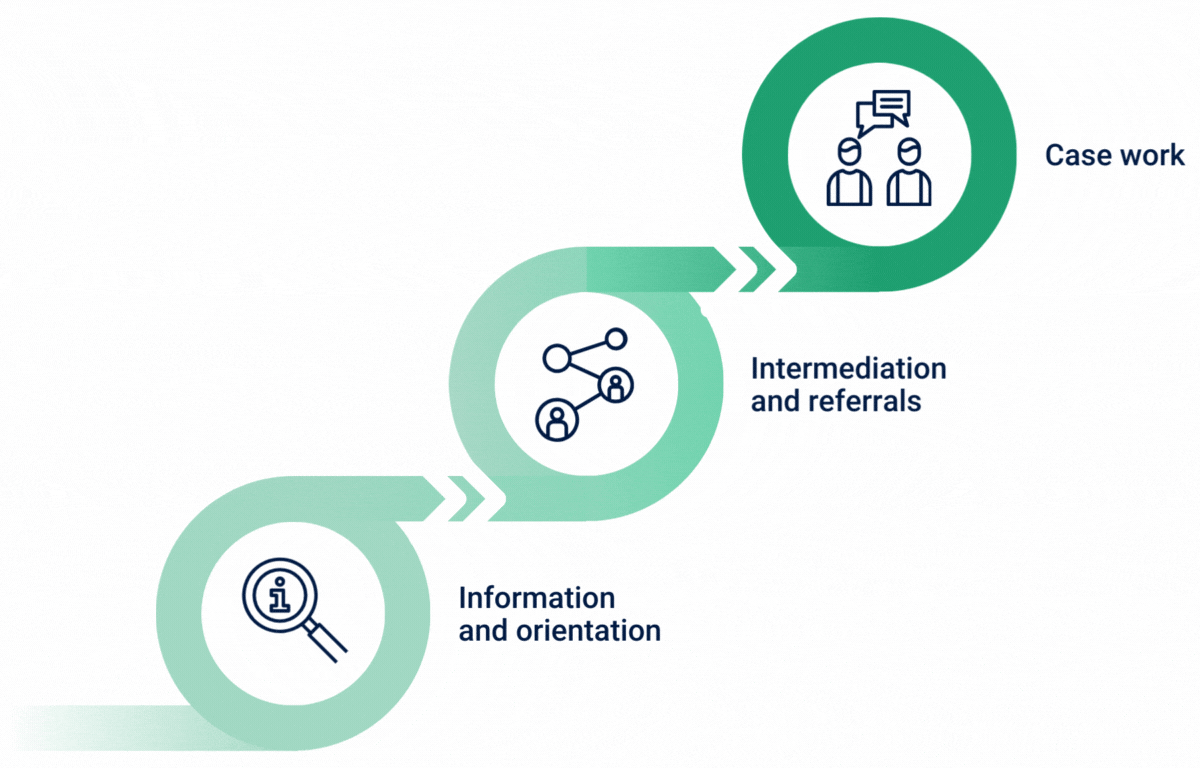Case Compass Guide
Case Compass
framework
How to make use of this guide

The Case Compass framework
The Case Compass team has developed a framework to distinguish case management interventions and case
management information systems from each other. It includes three elements:
Population groups served
Low-income families
Children and their families
Older people
Unemployed people
Other vulnerable groups
Intake points
Direct registration
Indirect registration
Intensity of case management
Information and orientation
Intermediation and referrals
Case Work
Click here to see examples of case management information systems from around the world,
and how they fit into this framework.
Case studies
Find real examples of case management information systems
Case management is a social protection methodology that can meet the needs of a wide
variety of populations. Some commonly served populations include:

Low-income families
This population group is frequently served by social programs and particularly by cash
transfer programs. Cash transfer programs often complement support with case management
interventions.

Children and their families
Child protective services (CPS) and other social programs for vulnerable children use
case management and case management information systems to improve services and outcomes
for children and their families.

Older people
As populations age, citizens’ needs become more complex. Case management can provide
social services to older adults in contexts of care and daily living.

Unemployed people
Public employment services generally support their clients through profiling tools
to link them to job opportunities, and sometimes offer more tailored case management
to individuals further from the labor market.
Other vulnerable groups
There are more vulnerable population groups — like migrants or people with
disabilities — where case management can support their needs.
Beneficiaries can enter case management interventions either
directly or indirectly.

Direct intake
In direct intake, people are brought into case management directly at a front office.
This happens, for example, in countries where municipalities provide integrated support
to citizens through local social assistance units. There, municipalities guide clients
to adequate support, or refer them to more specialized social work.

Indirect intake
In indirect intake, people are brought into case management when it is provided as part
of another social program, or when referred to it by another program. For instance, in
conditional cash transfer program, case management may be provided alongside the monetary
benefit. A beneficiary of the program can receive this case management, but someone who
doesn’t qualify for it could not. With indirect intake, the social program provides data
about beneficiaries to the CMIS. A social worker can’t add this beneficiary data directly
(and only) for case management.
Case management interventions can be categorized according to increasing and cumulative degrees of
intensity. This intensity depends on how often case managers and clients meet, what type of
interaction they have, and the type of support the case manager provides.
Each higher degree of case management intensity includes the support described in the previous
one. For example, when an intervention offers intermediation and referrals, it generally also
offers information and orientation about available benefits and services.

Broadly speaking, these degrees of case management intensity include:
Information and orientation
When the individual or family is registered for case management, they receive general information,
orientation, and guidance about available services and benefits, without an in-depth assessment
of needs. While this could be considered a more general service, it can become case management
when there are repeated interactions with the client that would lead to more tailored orientation
about the available services.
Intermediation and referrals
Case managers broadly assess individual or family needs and situation to provide information,
orientation, and intermediation to available benefits and services, based on the results of an
assessment. This support may include referring the beneficiary to another service (within the
same agency or in another agency) for which they are eligible. Usually, the case manager also
informs the other service that a client will be referred.
Case work
The interaction between the case manager (a social worker) and the client involves a more in-depth
assessment, the preparation of an agreed intervention plan, and close monitoring and contact.
This most intense degree is what is generally understood as case management in social work.